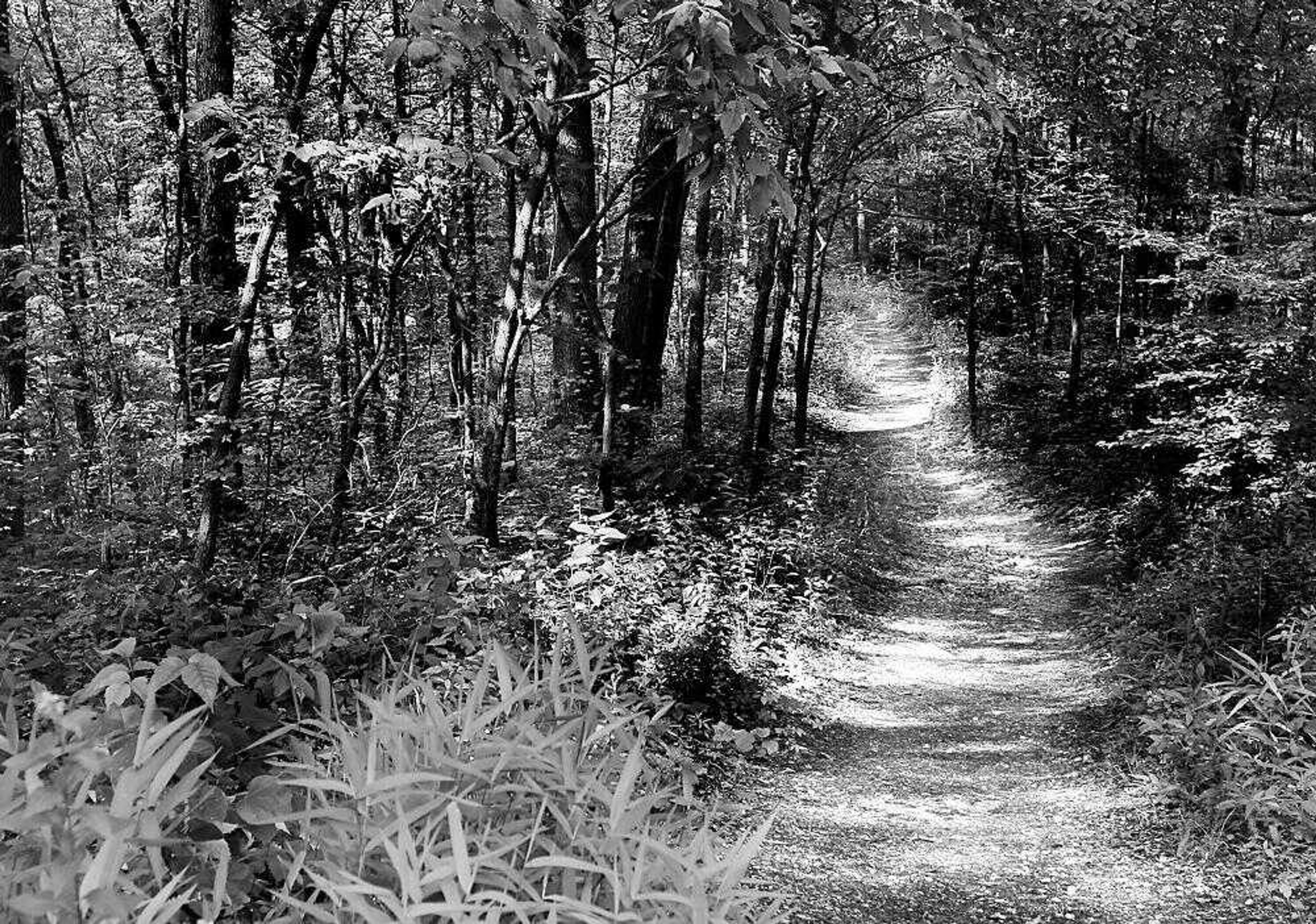Trail of Tears State Park, known for its tragic history as the place where many Cherokee Indians crossed the Mississippi River and lost their lives in a forced relocation, celebrated its 50th anniversary Saturday.
For 29 of those 50 years, a wild area of 1,300 acres has been protected by Missouri's Wild Area System, patterned after the federal Wilderness Act signed by President Lyndon B. Johnson in 1964. Only 11 wild areas exist in nine Missouri State Parks.
"Importance of this pristine land will be more appreciated in years to come as development continues," said Denise Dowling, the park's interpretive resource coordinator.
The Indian Creek Wild Area is at the north end of Trail of Tears State Park and includes the 10-mile Peewah Trail. Open to hikers, backpackers and horseback riders, the trail is divided into four sections. The green loop takes visitors to an overlook along the Mississippi River and is about 1.5-miles round trip. The yellow loop is 3.4 miles and meanders along the Mississippi for a short distance. The red loop is a little less than 6 miles.
Hardwood forests of white oak, tulip poplar and hickory cover the hills. Floodplain forests along Indian Creek contain large sweet gums and willows, while junglelike areas thick with wild grapevines abound in the lowlands. Limestone bluffs tower above the Mississippi River.
Management policy of the area includes limiting man-made noise. Motorized equipment and mechanical transport, including bicycles, are not permitted in the wild area. Route marking, clearing, structure repair, trail maintenance and drainage are kept at a minimum, adhering to standards that meet needs and retain wilderness values in that area, using hand tools and cross cut saws to the greatest extent possible.
According to www.mostateparks.com, wild areas must appear to have been affected primarily by the forces of nature, possess outstanding opportunities for solitude and unconfined recreation, be significant in size -- generally 1,000 acres or more -- and may also contain ecological, geological or other features of scientific, educational, scenic or historical value. They are not limited to recreational value but also provide outdoor classrooms for environmental education and are increasingly important reservoirs of scientific information.
Besides the park's wild area, unique natural resources abound. Some of those were explained in detail by Bob Gillespie, Missouri Department of Conservation natural history regional biologist, who had photos and preserved examples of some of the endangered, threatened, imperiled and declining species found in the Cape and River Hills Conservation Opportunity area, of which the park is a part. Some of the animals on display were the barn owl, bobcat, whippoorwhill and two types of poisonous snakes: a copperhead and timber rattlesnake, all of which can be sighted in the park.
On Saturday, Xavier Bingaman, 12, of Florissant, Mo., was at Trail of Tears for a Boy Scout family campout. His mother, Regina Bingaman, said they planned the campout around the 50th anniversary celebration.
Xavier said his favorite activity was the fish maze. Participants identified fish indigenous to the Mississippi River by comparative observations.
A.J. Hendershot, of the Missouri Department of Conservation, said most people caught on quickly. "Most end up getting all of them right by the third try," he said.
Organizers estimated between 200 and 250 people were at the celebration.
Sponsored by the Missouri Department of Natural Resources, the celebration included interpretive exhibits on park history, the fish maze, grit tempered wood pottery examples from the Woodland Period (3000 B.C. to 700 A.D.) found on park land in 1983 and displayed at the university museum, fur displays, a presentation on the park's natural resources, hiking trail information, an informational meeting and a folk concert all at Wescoat Shelter, near the electric campsites.
cpagano@semissourian.com
335-6611, extension 133
Connect with the Southeast Missourian Newsroom:
For corrections to this story or other insights for the editor, click here. To submit a letter to the editor, click here. To learn about the Southeast Missourian’s AI Policy, click here.







